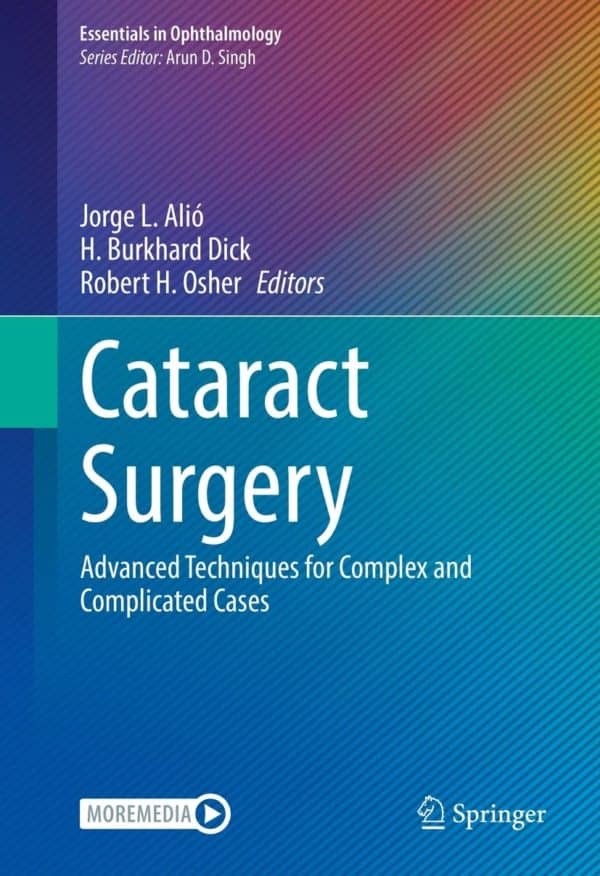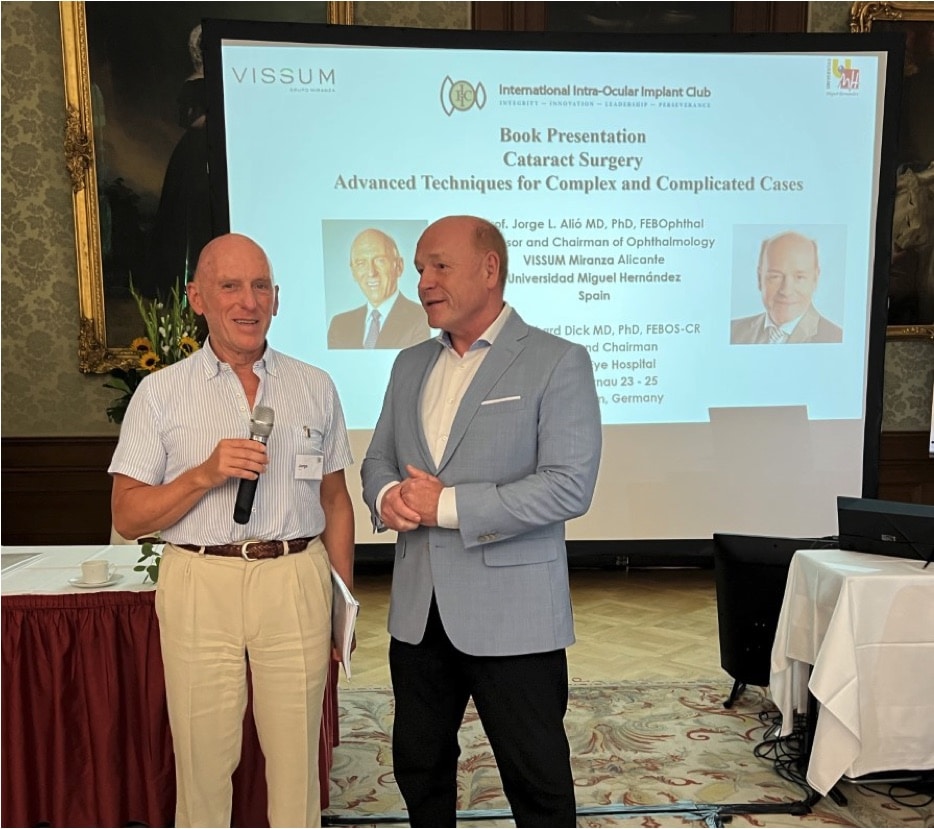Jorge Alió, H. Burkhard Dick and Robert H. Osher have edited an exceptional book on one of the most attractive topics in the current Ophthalmology field
Throughout the 507 pages, 41 chapters and a multitude of didactic videos, the publication ‘Cataract Surgery: Advanced Techniques for Complex and Complicated Cases’ aims to explain how to manage difficult cases, or complications during cataract surgery, with an added didactic and educational value.
The content is available both in full text and by chapters. The official presentation took place at the biannual meeting of the International Intraocular Implant Club (IIIC), in Frankfurt, Germany, July 24-31, 2022.
With the valuable contribution of more 20 authors, this book offers an in-depth overview of the subject, from the experience of highly specialized professionals in complex techniques. It is highly recommended for ophthalmologists undergoing training in Cataract Surgery, and who wish to complete their knowledge about complicated cases.
According to doctor Jorge Alió, “the spirit of our book can be summed up as: always obtaining excellent results, sometimes even against all odds!”.
Published by a leading medical editorial, Springer Nature, it walks the reader through basically every imaginable pitfall of Ophthalmology, presenting cases -some of them very advanced-, such as eyes with a long history of recurrent uveitis or severe glaucoma damage, which require significant technical skill, experience, a well-organized or team and compassion.
“Although the statement ‘nothing is impossible’ would sound arrogant in this field, many situations still can be considered as utopic today in cataract surgery. Thus, a person who might be described as ‘a complicated case’ -or even ‘a hopeless case’-, can now become a happy patient”, explains Dr. Alió.
For the Professor of Ophthalmology at the Miguel Hernández University (UMH) of Elche, “Cataract surgery is one of the most successful -if not the most- procedure in the current medicine. Given the high modern life expectancy, chances are that at some point -sooner or later- we will all undergo cataract surgery and receive an intraocular lens (IOL), customized to our individual visual needs”.

This type of lens provides improved visual acuity, especially at mid-to-long distance or ‘far’ as it is often called, and sometimes for intermediate and near vision as well.
“The successful outcome of the problematic eyes, even in patients with lifelong corneal disease or extreme dry eye, continues, and these people get to enjoy decent visual quality after cataract surgery due to the enormous experience and skill of many international eye surgeons, who perform these types of interventions because of the benefit that these types of operations provide to the population”, adds Jorge Alió.
For today’s new ophthalmologists, this book shares the vast experience of the best international ophthalmologists in this field, accompanied by valuable didactic illustrations and many instructive videos.





